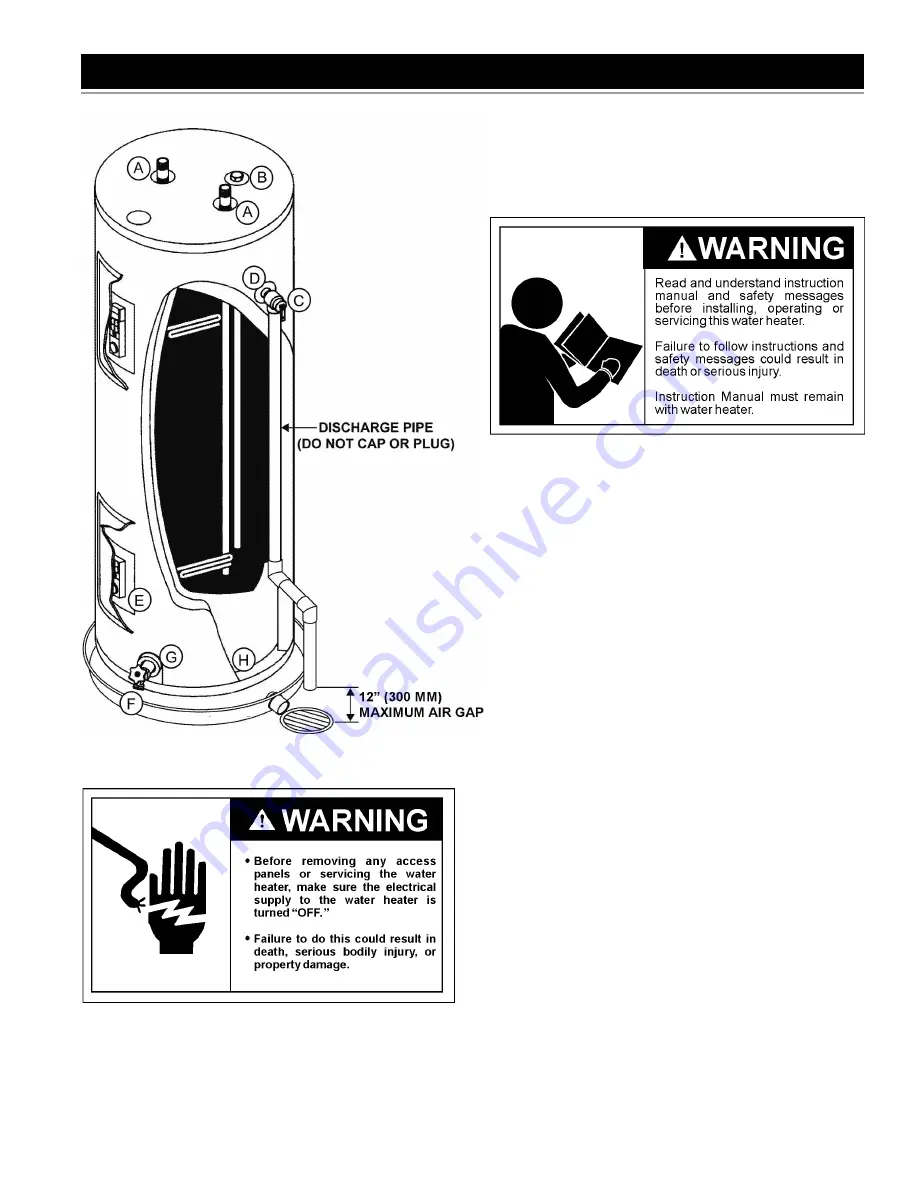
19
LEAKAGE CHECKPOINTS
Read this manual
fi
rst. Make sure the electrical power supply has
been turned “OFF” before checking the tank for leakage.
*A. Condensation and dripping may be seen on pipes if the water
temperature is low in humid weather or pipe connections may
be leaking.
*B. The anode rod
fi
tting may be leaking.
C. Small amounts of water from temperature-pressure relief valve
may be due to thermal expansion or high water pressure in your
area. If the valve is not piped to an open drain the released
water could be mistaken for a leaking heater, see “Thermal
Expansion” section.
*D. The temperature-pressure relief valve may be leaking at the
tank
fi
tting.
E. Water on the side of the tank may be condensation due to the
panel or insulation not being in place.
F. Water from a drain valve may be due to the valve being slightly
opened.
*G. The drain valve may be leaking at the tank
fi
tting.
*H. Water in the water heater bottom or on the
fl
oor may be from
condensation, loose connections, or the relief valve. DO NOT
replace the water heater until a full inspection of all possible
water sources is made and necessary corrective steps taken.
Leakage from other appliances, water lines, or ground seepage
should also be checked.
* To check where threaded portion enters tank, insert cotton
swab between jacket opening and
fi
tting. If cotton is wet, follow
“Draining” instructions in the “Periodic Maintenance” section
and then remove
fi
tting. Put pipe dope or te
fl
on tape on the
threads and replace. Then follow “Filling the Water Heater”
instructions in the “Installing the New Water Heater” section.
FIGURE 23.
Use this guide to check a “Leaking” water heater. Many suspected
“Leakers” are not leaking tanks. Often the source of the water can
be found and corrected.
If you are not thoroughly familiar with your water heater and safety
practices, contact a quali
fi
ed installer to check the water heater.
Summary of Contents for 6-120
Page 3: ...3 GENERAL SAFETY ...










































